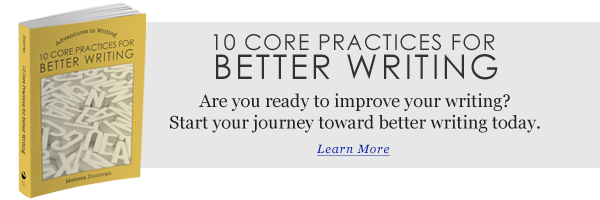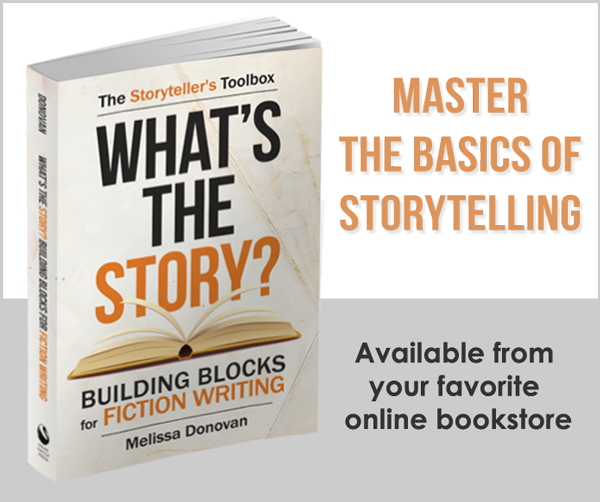Those of us who spend a lot of time studying the craft of writing inevitably come across bits of writing advice that we hear over and over again: show don’t tell, write what you know, and kill your darlings. These writing tips can be a bit cryptic, but the one about revisions is crystal clear: writing is rewriting.
The intention is to get ideas out of your head and onto the page (or the screen, as the case may be) as quickly as possible without worrying about grammar, spelling, and punctuation. You don’t need to get the details right. Just get that rough draft completed. You can clean it up later.
Like most writing tips, this one is debatable. Some writers prefer to labor over each sentence while composing a first draft. This means fewer edits later. Others use the drafting process to navigate through their ideas. This often means more revisions when the drafting is done; in other words, the bulk of time is spent on rewriting.
Getting it Right the First Time
If you have a solid grasp on your project, then polishing as you go might be a good process for you. For example, if you’ve sketched your characters and made a detailed outline of your story, then you can focus on details and mechanics as you work through your first draft.
It might seem like trying to get it right on the first pass will be a time saver. I’m not sure about that. Drafting in this manner means going over each sentence and paragraph several times before moving on to the next. In this sense, you’re still revising multiple times; you’re just doing it at the sentence or paragraph level rather than revising the entire manuscript.
But what if later in the process, maybe at the midpoint or end of your text, you discover a major problem that requires cutting or rewriting large portions of text? All that time you spent editing could go to waste.
However, this is a method I often use when writing blog posts, and I’ve found that there are some benefits to it. When I use this method, I outline the posts first. Drafting is faster and smoother because I’ve already planned what I’m going to cover. As I draft, I go over each sentence and paragraph multiple times rather than going over the entire piece from beginning to end multiple times. Finally, I can usually polish it with a single proof.
It all goes by pretty quickly, but since I’m working on short pieces, I can easily keep all the ideas for each piece in my head as I’m writing. When I’m working on a more elaborate project, like a novel, there’s a lot more going on. I might go over certain sentences and paragraphs multiple times during any given edit, but usually I work through the entire draft, give it a rest, then do it again and again until I’ve got a polished manuscript.
Get it Right Through Revisions
A book is a massive undertaking. It’s not unusual for writers to spend over a year on the first draft alone. If you’re writing a novel, you have a lot to think about: characters, plot and subplots, scenes, action, dialogue, description, themes, and story arcs. Even if you have a general idea of what your story is about, once you start fleshing it out, you’ll run into all kinds of problems.
These problems can slam the brakes on your writing progress. If you’re also paying close attention to grammar, spelling, and punctuation or working out the most minute details of every scene as you write your first draft, you’ll find yourself stopping every few sentences to iron out the wrinkles. When you do that, you risk losing your train of thought. If you’re deep into a scene, you could lose its entire flow because you’re worrying over punctuation or capitalization questions that could be dealt with later.
During revisions, you can shave off the excess, editing your piece down, or you can build on the narrative, fleshing out the details. You can clean up the grammar, get rid of the typos, and fix everything that needs fixing. Every time you go through another revision, you make the manuscript better. All that rewriting leads to a clean, polished project.
Most writers seem to get the best results with this method.
Rewriting
If you’re going to write by rewriting, plan on going over your work multiple times. Here’s a good system:
- First draft: As you write the first draft, focus on getting your ideas on the page. Don’t go back and revise at all. In fact, don’t even reread what you’ve written unless you absolutely must in order to get your bearings.
- Review: Go through your draft and make notes about large problems that need to be addressed. You might need to rename some characters, conduct research so you get the facts right, move large sections around, or make major changes to the narrative.
- Rewrite: Using your notes, do a thorough rewrite of the entire draft. Now your messy rough draft is cleaned up.
- Revise: Read through your second draft, making changes as you go. Tighten up the dialogue, smooth out the descriptions, check for sentence flow and word choice. You might do focused revisions: one for dialogue, one for fact-checking, one for double-checking your descriptions.
- Edit: You’ll probably clean up a lot of technical errors as you rewrite and revise, but when you edit, you should be focused on grammar, spelling, punctuation, and sentence structure. If you’re not sure about the rules of grammar, this is when you should look them up.
- Proofread: Finally! Now you’re just checking for those last remaining pesky typos.
You might need to repeat some of these steps. For example, I usually recommend proofreading a manuscript until you can’t find any remaining mistakes or typos. Ideally, once you’re done, you’ll bring in a professional editor. Remember, no matter how many times you go over your manuscript, a few mistakes and inconsistencies will slip through.
How Much Do You Rewrite?
Do you try to produce a perfect first draft, or do you follow the old adage that writing is rewriting? Do you use different writing processes for different projects? (I do.) Finally, what are some of your favorite writing tips? Share your thoughts by leaving a comment, and keep writing.






Absolutely right.
There’s no question that the vast majority of your time writing will not be writing at all, but editing. Which often feels like the same thing, but it’s a different thought process. You switch from thinking about what might happen to what, now you’ve reflected on things, should happen.
It’s much more difficult but twice as rewarding!
I enjoy editing a long manuscript the first couple of times, but then it gets tedious. I agree that it’s twice as rewarding as the first draft. With each edit, I feel one step closer to completion whereas while writing the first draft, the road ahead seems too long to contemplate.
I write my first draft in a notebook (actual pen and paper here), then I type it and send it to my mom. That draft gets printed and edited with a pen. Then I just keep revisng and editing where needed.
Good system!
It seems to need different mind sets, writing first draft and editing. Glad to know I’m not the only one takes a year (or more) on a first drafts.
Yes, writing and editing definitely require different mindsets. While writing the first draft, everything feels messy to me, almost like I’m finger painting with my eyes closed. When I start editing, it’s like I’ve a got gloves on and am ready for some deep cleaning. Not only are these mindsets different, they are completely opposite!
I wrote the first draft of my current novel during NaNoWriMo, well 75% of it. Finished it and then started sending 2 chapters a week to my critique partners. Now I’m going through and addressing all the issues we found. It’s a little tedious but so worth the effort. Once I’m done I’d like to have a few beta readers have at the whole piece. After that I’m thinking have an Editor go through it. Fix it one last time and call it good.
My favorite part of the whole process is the first draft stage. I outline with a very clear direction and then just get it all out like mad woman possessed. Totally my favorite part!
I currently have another piece outlined and one that screaming for a voice, so we’ll see.
Thanks for your posts as always, they are wonderful concepts to chew over!
Thanks for sharing your writing process, Beckie. It’s a good one. I love to write like a mad woman possessed. That is definitely the best part!
Hi Melissa,
Great post. I posted it to my blog wall.
I call the first draft the FAST DRAFT because I turn my internal editor OFF. I shoot for so many words in so many days and PUSH through it. But, before that, I know the characters, the beginning and ending of my story, and what their goals are. Then I go through the rewriting process you’ve outlined above. Except, in my first YA novel I gave it to 10-15 teens to read. I didn’t know any of them. And I asked their opinions. It really helped. But seeing you outline the steps here reinforces that what I’m doing is right. We can’t be in too big of a hurry to put our books in front of readers. You only have one chance to make a first impression. (No pressure. Ha!)
Thanks,
Michelle
That’s great, Michelle. It sounds like you have your writing process down, beta readers and all!
Oh I know exactly what you mean. I am editing my MS at the moment and it’s incredible how many silly mistakes I’ve made along the way. One more proof read to go and it’s off to my agent. Thanks for the interesting post. Ange xx
Those silly mistakes are the worst. The ones that confound me are when I’ve typed the wrong word altogether, like “are” instead of “and.” I always wonder what’s going on in my brain when that happens.
I have found that the pieces I have got published were often written off the top of my head . As I am very self critical and inclined to doubt myself, I find my inner voice can very often be frightfully good at shooting my ideas in the foot so I have to not ponder too much over a re- write………………………but I ‘d never send of a first draft……………….no one would understand it…………even me!
I agree with you about submitting rough drafts. That’s never a good idea.
I write my first draft with minimal editing, but I can’t help myself correcting those pesky typos that crop up.
Then the hard work begins. I seem to have been rewriting my current novel for ever. The trouble is, I’m certain there are plot holes or incorrect facts even though I’ve gone through it several times. And what about repetition? I find that a problem as I can’t read the whole thing at one sitting, and then ask myself ‘Did I mention that earlier, or was it in an earlier draft?’
I suppose that’s my lack of confidence. Anyway, after this pass, it’s going to the publisher. Their editor can find any further problems.
I agree; some of those pesky typos just can’t be ignored. Have you ever considered working with a developmental editor? They specialize in helping with story problems, like plot holes. Thank goodness for editors of all kinds!
Hey Melissa
My only problem with rewriting after a messy first draft is this: my heart plummets at the amount of information that must be rewritten! LOL
I prefer to outline my blog posts and then get at least 60-70% done before the editing process. This way, I don’t have to start from scratch!
Of course, authoring books is a labor-intensive process, and one that I have no experience in! LOL
(and, yes, I ended with a preposition 😀 )
Thank you so much #HUGS
Kitto
Thanks, Krithika.
Always remember this: an editor may not pay attention on a minor grammar mistake that more often than not might have been a typo mistake, but he will see straight away if it’s a good story or not and he will notice this after having read few pages of it.
Hi Vicky. There are different types of editors. Editors at publishing houses who select works to publish are looking for good stories that they think they can sell to readers. I’m not sure why the job of choosing manuscripts belongs to this title, because editor is more widely used to refer to a professional who reviews material and makes corrections. While there are developmental editors who will focus on story, the vast majority of editors do indeed check for grammar, spelling, punctuation, and sentence structure. I am not trying to correct you–your statement is true of editors who select works to publish, but I want to make sure other readers are aware that this is just one type of editor. Thanks for commenting.
I’m one to write as soon as I’ve a full story to tell. Obiviously, if at first glance, I notice a misspelling, I correct it, but I always try to write as well as I can. It may happen that when one reads a first draft and even if it’s well written, one may find better expressions or phrases than one had written first. I don’t agree much with that trend of “show it, don’t tell it”. Everyone must have its own way to express an idea. Have we forgotten the compund sentences? If we’re to follow this trend of showing instead of telling, we’re depriving an author to describe. When I ask a friend to read one of my stories, I always tell them to focus on the story whether it’s a good one or not instead of focusing on grammar mistakes or misspelling. These can always be corrected, but a boring or bad story cannot unless one deletes everything and starts all over again. I hate flattering as much as I hate a simple negative opinion. If someone tells me that they didn’t like, I’m always to ask them why and the same if they tell me it’s very good. Telling us why it’s boring or brillant do really helps us a lot.
Hi Vicky. Showing and describing are often the same thing. Showing means we write in a way that allows the reader to see what’s happening. If I tell you Kate was sad, you know she was sad, but you can’t see her being sad. If I show you that Kate bowed her head as tears streamed down her face, well, then you can see her crying, especially if you’ve already read a description of Kate.
Hi,
I love this. The first draft is always for me just that, a first draft. The real writing starts when I begin to revise, and I do as many revisions as necessary to get my manuscript ready to send out to the editors who I’ve chosen.
Shalom aleichem
I agree! For many writers, the first draft is where they find the story, so it makes sense that the real writing begins with the second draft.